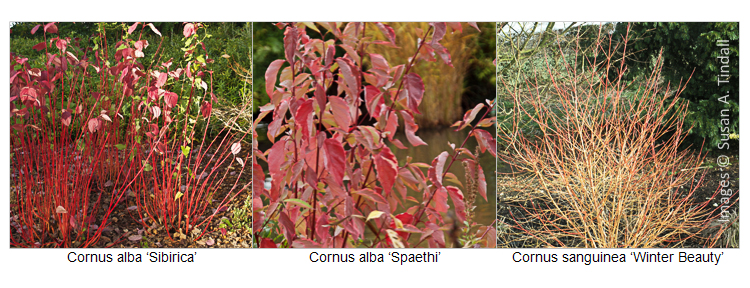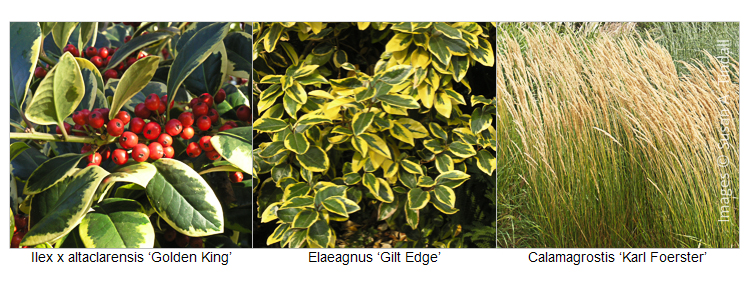During the cold and leafless winter months the view from the house, and frequently the kitchen sink, are often the nearest that you get to the garden. A bright block of colour that attracts the eye can lift the spirits. This is where brightly coloured evergreens, shrubs with vivid stems and larger ornamental grasses come into their own.
Their position is all important and it is worth taking time to simply observe the garden from the house. Take time to plan the best position for a long term winter feature. On the rare sunlit moments note the effect of light: which part of the garden, seen from the house, catches the light best? The longer rays from the winter sun can make stems glow and grasses glitter. These features can last for months and make a good investment.
When the majority of the herbaceous plants have collapsed, the ordered shapes of neat hebes or trimmed box give order, as do the flat brown heads of sedums. The effects of snow and frost on their surfaces can provide unexpected pleasure for the observant.
For foliage interest variegated hollies such as Ilex x altaclarensis ‘Golden King’ or Elaeagnus x ebbingei ‘Gilt Edge’ have a clean crisp glow.
On a smaller scale, stem colour is provided by dogwoods examples being Cornus alba ‘Sibirica’ the reddest, Cornus alba ‘Spaethi’ with green and gold variegated leaves in summer as well as red stems, whilst Cornus sanguinea ‘Winter Beauty’ is brilliant orange. (Prune dogwoods to a few inches above the ground the following Spring.) For grasses the vertical Calamagrostis x acutiflora ‘Karl Foerster’ can just glow. For herbaceous interest the flat heads of Sedum spectabile forms are warm brown and white when frosted.

Enjoy!
Susan A. Tindall

